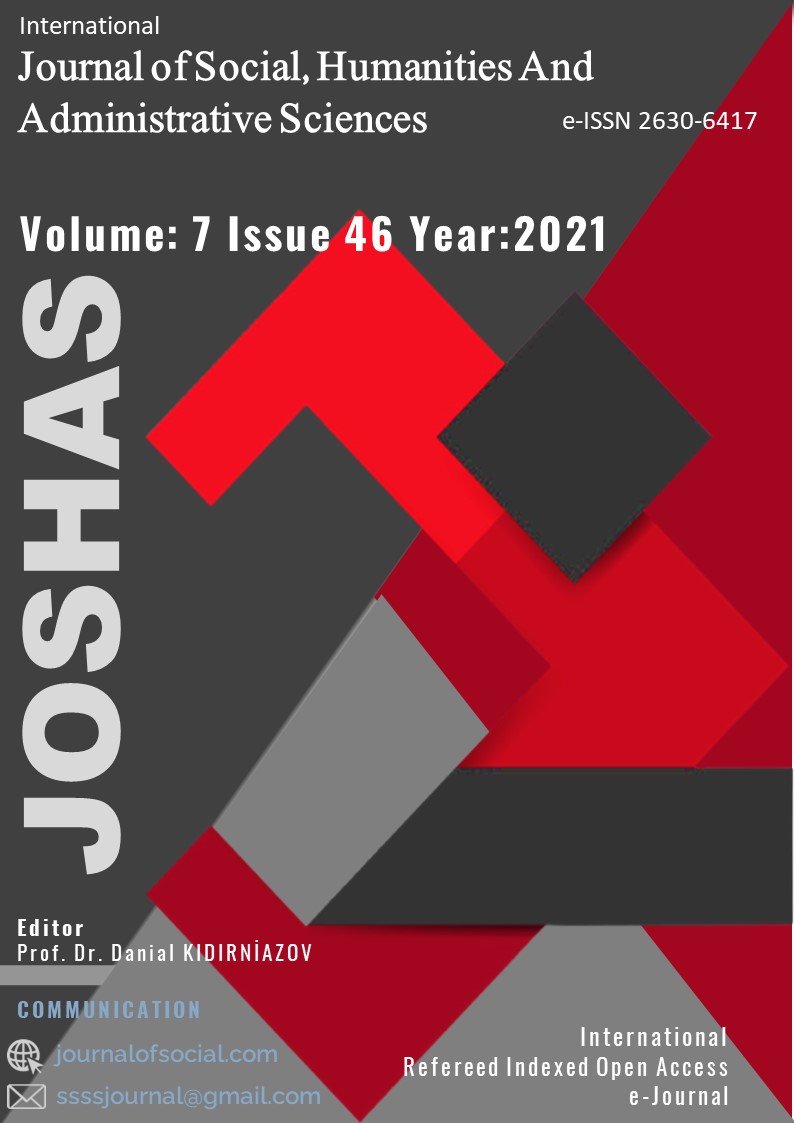Author :
Abstract
Birleşik cümlelerde yardımcı cümlenin başında bulunan kelimeler Muharrem Ergin tarafından “cümle başı edatı” olarak incelenmiştir. Bu yapıdaki cümleler genellikle sıfat-fiil kullanılarak yardımcı cümleleri temel cümlelere bağlarlar. Bakıldığı zaman bu edatlar Türkçenin sözdizimine uymamaktadır. Çünkü Türkçenin sözdizimi özne, tümleç ve yüklem şeklindedir. Buna rağmen Eski Anadolu Türkçesi ile yazılmış metinlerde bu yapıya sıklıkla rastlanmaktadır. Türk Dilinin tarihi dönemlerini okuyan öğrencilerin bu yapıyı düzgün bir şekilde öğrenmesi gerekmektedir. İşte bu yüzden bu çalışmada ilk olarak cümle başı edatlarından kısaca bahsedilecek ve Eski Anadolu Türkçesinde yazılmış manzum ve mensur eserlerde cümle başı edatlarıyla kurulmuş cümlelere değinilecektir. Daha sonra çalışmanın esas konusu olan Marzubānnāme hakkında bilgi verilecek; adı, konusu, nüshaları, üzerinde yapılan çalışmalar açıklanacak ve eserdeki cümle başı edatlarıyla kurulmuş cümlelere örnekler verilecek ve bu örnekler değerlendirilecektir. Bu çalışmanın amacı Türkçenin sözdizimine uymayan bu cümle yapısının bahsedilen eserde ve genel olarak Eski Anadolu Türkçesi dönemi eserlerinde ne sıklıkla ve hangi sebeplerle kullanılmış olabileceğini belirlemek ve bunları değerlendirmektir.
Keywords
Abstract
The words at the beginning of the auxiliary sentence in compound sentences were examined by Muharrem Ergin as “prepositions at the beginning of the sentence”. Sentences in this structure usually connect auxiliary sentences to basic sentences by using adjective-verb. When viewed, these prepositions do not confirm to the syntax of Turkish. Because the syntax of Turkish is in the form of subject, complement and predicate. Despite this, that structure is frequently encountered in texts written in Old Anatolian Turkish. Students that studying the historical periods of Turkish Language should learn this structure properly. That’s why in this study, firstly, sentences formed with prepositions will be mentioned and sentences formed with prepositions in verse and prose works written in Old Anatolian Turkish will be mentioned. Then, information will be given about Marzubanname which is the main subject of the study; it’s name, subject, copies and the studies on it will be announced and examples of sentences formed with prepositions in the work will be given and these examples will be appraised. The aim of this study is to determine and evaluate how often and for what reasons this sentence structure, which does not comply with the syntax of Turkish, could be used in the mentioned work and in general works of Old Anatolian Turkish period.
